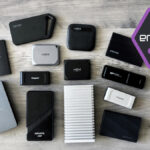Revolutionizing Bioelectronics with Hydrogel Semiconductors
The perfect material for connecting electronic devices to biological tissues is one that is soft, flexible, and hydrophilic—essentially a hydrogel. In contrast, traditional semiconductors used in bioelectronic applications like pacemakers, biosensors, and drug delivery systems are typically rigid and brittle. These materials repel water and cannot be dissolved in the same manner as conventional hydrogels.
Recently, researchers have made significant strides in overcoming this longstanding obstacle by rethinking how hydrogels can be synthesized to incorporate semiconductor properties. The outcome of this innovative approach is a translucent gel that moves gracefully in water akin to a jellyfish while possessing the critical semiconductive capabilities necessary for effective communication between living organisms and electronic devices.
A Breakthrough in Material Science
This new hydrogel semiconductor not only maintains its structural integrity but also enhances the interaction between biological systems and technology. This advancement opens up exciting possibilities for developing more efficient medical devices that can seamlessly integrate with human tissue.
Applications of Hydrogel Semiconductors
The implications of this research extend beyond just pacemakers or biosensors; they could revolutionize various fields including wearable health monitors, advanced prosthetics, and targeted drug delivery systems. For instance, imagine smart bandages equipped with sensors that monitor wound healing processes while delivering medication directly where it’s needed most.
The Future of Bioelectronics
This breakthrough represents a significant leap forward in bioengineering by merging the flexibility of hydrogels with the functionality of semiconductors. As scientists continue to refine these materials further, we may soon witness an era where electronics are not only compatible but also harmonious with our biological makeup.





